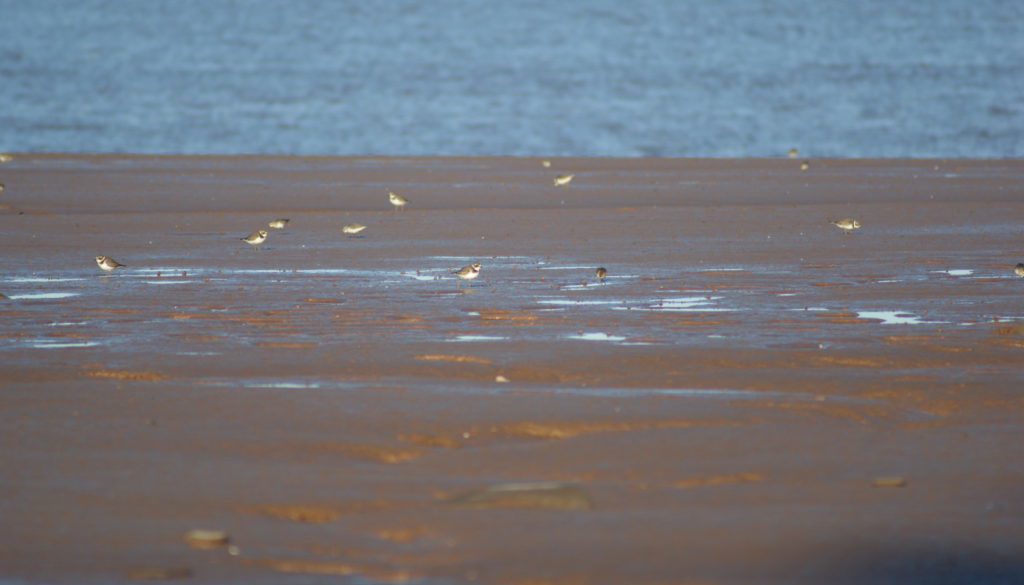A big year for Canada’s big biodiversity goals

Here we are, about two weeks into the new year and settling in to our new resolutions and routines. You might have set some ambitious goals to for this year, and so has Canada. Through partnerships between the federal, provincial, and territorial governments, our country has set four major goals for biodiversity to reach by 2020.
These four goals include 19 different targets. Some of these goals and targets might be quite familiar to you. Target 1, for example, which aims to protect 17% of land and inland water and 10% of coastal and marine areas by 2020, comes up more frequently in the media than other targets. Other goals and targets might be less familiar as they relate to particular industries or actions. So, what exactly is Canada planning for our wildlife and ecosystems? Let’s break these biodiversity goals down.

Goal A: By 2020, Canada’s lands and waters are planned and managed using an ecosystem approach to support biodiversity conservation outcomes at local, regional, and national scales.
Through Goal A, Canada aims to safeguard our lands, waters, and the biodiversity within them against human impacts, ensuring that Canadian ecosystems can continue to deliver the many services that we depend on. Goal A includes Targets 1 to 5, which call for increased protected area coverage (Target 1); protection and recovery of species, including endangered species (Target 2); protection of wetlands and their many important functions, like water filtration (Target 3), better inclusion of biodiversity in municipal planning (Target 4), and an understanding of how Canadian ecosystems will adapt to climate change (Target 5). Goal A calls for the ecosystem approach, which means considering the complex relationships of an ecosystem, including relationships between biodiversity, with humans, and the non-living environment, when planning for conservation.

Goal B: By 2020, direct and indirect pressures as well as cumulative effects on biodiversity are reduced, and production as well as consumption of Canada’s biological resources are more sustainable.
Goal B includes eight of the 19 targets directed at natural resource use in Canada and the impacts of these uses on biodiversity and ecosystems. Some targets under Goal B focus on particular industries, including forestry (Target 6), agriculture (Target 7), aquaculture (Target 8), and fisheries (Target 9). Other targets aim to reduce pollution in Canadian waters (Target 10); to prevent the spread of invasive species (Target 11); to maintain the sustainable use of natural resources by Indigenous Peoples (Target 12); and to apply new ways for conserving biodiversity. To reduce cumulative effects, planners must consider how different actions and uses of biodiversity and ecosystems interact to create bigger problems. Goal B deals with changing the ways that Canadians interact with biodiversity to improve conservation and ensure future use.
Goal C: By 2020, Canadians have adequate and relevant information about biodiversity and ecosystem services to support conservation planning and decision-making.
Goal C aims to better prepare our planners and decision-makers by arming them with the best available knowledge to make informed decisions when it comes to conservation. Through its four targets, Goal C calls for new and more accessible biodiversity science (Target 14); stronger respect for and inclusion of Indigenous knowledge (Target 15); a complete list of Canada’s protected areas (Target 16); and an improved economic understanding of biodiversity and the benefits provided by ecosystems (Target 17). This goal is all about improving science and knowledge of Canada’s biodiversity.

Goal D: By 2020, Canadians are informed about the value of nature and more actively engaged in its stewardship.
Goal D is about encouraging Canadians to become better acquainted with our biodiversity. The final two targets call for the inclusion of biodiversity in elementary and high school lessons (Target 18) and growth in the number of Canadians getting outside and into nature (Target 19). Goal D is one that each and every one of us can get involved in today, tomorrow, or this weekend!
These are some ambitious goals! With 30% of the boreal forest, 20% of the world’s freshwater, the world’s longest coastline, and many vibrant ecosystems, there is a lot of biodiversity in Canada worth conserving. We know what needs to be done to protect nature and to ensure that all Canadians continue to benefit from healthy ecosystems, now we need to get to work. In this last year of action, CPAWS-NB encourages New Brunswickers to engage with their local officials and communities to spread the conservation message. Not only do we need more protected areas and new strategies for conserving natural resources, but we also need more passionate New Brunswickers to speak up for nature in 2019!
To read Canada’s four goals and 19 targets, check out this flyer.
Read more on the 2020 Biodiversity Goals and Targets for Canada here.
Catch up on CPAWS report on Parks and Protected Areas to 2020 and Beyond released this summer.
Read more on the Pathway to Canada Target 1 here.
Julie Reimer is a PhD student at the Memorial University of Newfoundland and a Board Member of CPAWS-NB. Having worked in the whale watching industry in New Brunswick and conducted her Master’s research on conservation planning for the North Atlantic right whale, Julie is an advocate for MPAs in New Brunswick. Julie’s current research attempts to see the “bigger picture” of conservation, reaching beyond protected areas to understand the synergies between conservation actions and ocean industries. To connect with Julie, visit http://juliereimer.wixsite.com/hello.

